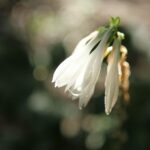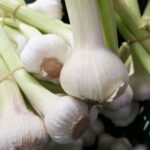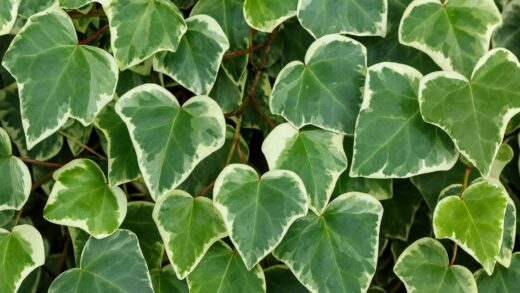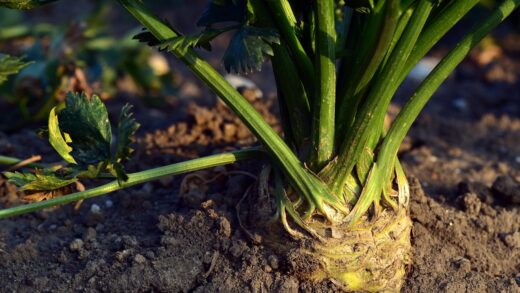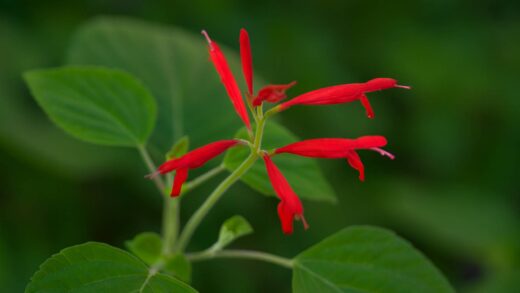One of the most charming and beloved ornaments of spring gardens is the flowering almond, also known as the dwarf flowering almond, which draws attention with its lush, double flowers. However, to ensure it shines in its most beautiful form year after year, providing adequate nutrient replenishment is essential, which is directly proportional to the plant’s vitality, growth, and the abundance of its flowers. Careful fertilization not only serves the spectacular bloom but also contributes to increasing the plant’s resistance to diseases and pests. A well-nourished flowering almond develops a strong shoot system, which forms the basis for the following year’s flowering, so the invested energy and care pay off in the long run. Creating the right balance of nutrients is crucial, as both excessive and deficient fertilization can have adverse effects.
The flowering almond is not fundamentally among the particularly nutrient-demanding plants, but its abundant flowering drains a significant amount of energy, which needs to be replenished for balanced development. The most important macronutrients—nitrogen (N), phosphorus (P), and potassium (K)—play different roles in the plant’s life processes, so their proportions require special attention. Nitrogen is primarily responsible for the growth of green mass, i.e., leaves and shoots, while phosphorus stimulates root formation and the development of flowers and fruits. Potassium, on the other hand, improves the plant’s overall condition, its tolerance to frost and drought, and its resistance to diseases, making it essential for developing a stable, healthy structure.
Micronutrients such as iron, magnesium, manganese, or boron, although needed in much smaller quantities, can cause serious physiological disorders if deficient. Iron deficiency, for example, leads to yellowing of the leaves (chlorosis), where the leaf veins remain green, but the leaf blade turns pale. This often occurs in calcareous, alkaline soils where iron is present in a form that is difficult for the plant to absorb. Magnesium deficiency also causes leaf yellowing, but the symptoms typically start on the older, lower leaves. Supplementing these elements is most effectively solved with complex fertilizers that also contain micronutrients or through targeted foliar feeding.
The ideal soil for the flowering almond is a well-draining, humus-rich medium with a slightly acidic to neutral pH (6.0-7.0). During pre-planting soil preparation, it is worthwhile to incorporate a large amount of organic matter, such as well-rotted manure or high-quality compost, into the soil. This not only provides initial nutrient supply but also improves the soil’s structure, water-holding capacity, and biological activity. Subsequently, regular replenishment of organic matter, for example, by mulching around the base of the plant with compost, contributes to the long-term maintenance of soil fertility and balanced nutrient management.
Timing and Methods of Fertilization
The most important period for fertilizing the flowering almond is early spring, before the start of the growing season. At this time, it is advisable to apply a balanced, slow-release, complex fertilizer that establishes the plant’s nutrient supply for the entire season. A nitrogen-rich composition helps promote vigorous shoot growth after flowering, which is essential for a lush bloom the following year. The spring base fertilization should be done after the frosts have passed but before budding, so that the nutrients can be washed into the root zone with rainfall and melting snow. This method ensures the plant has access to the necessary resources from the very beginning.
More articles on this topic
The period after flowering is another critical point for nutrient replenishment. The plant uses a great deal of energy and nutrients during its abundant blooming, which must be replaced to ensure regeneration and proper development. During this time, applying a fertilizer with a higher phosphorus and potassium content is recommended to promote root strengthening, the maturation of shoots, and preparation for winter. Potassium is particularly important for increasing frost resistance, so a fertilizer application in mid-to-late summer significantly contributes to the plant’s successful overwintering. Post-flowering fertilization also supports the differentiation of the next year’s flower buds.
Organic fertilizers, such as well-rotted manure or compost, are also an excellent choice, especially when spread around the base of the plant in autumn or early spring. These materials release their nutrient content slowly and gradually, while improving soil structure, increasing humus content, and promoting the proliferation of beneficial soil microorganisms. The use of organic fertilizers is a long-term investment in soil health, which is reflected in the plant’s vitality. However, it is important to use only fully matured, composted organic fertilizer, as fresh manure can “burn” the plant’s roots and may contain weed seeds.
When symptoms of nutrient deficiency appear, such as chlorosis, foliar feeding can provide a quick solution. Foliar fertilizers are absorbed through the leaves, offering almost immediate help to the plant by bypassing any potential uptake barriers in the soil. However, this method is only a symptomatic treatment and does not replace proper soil fertilization and soil condition improvement. Foliar fertilizers should always be applied in the dilution recommended in the instructions, during the early morning or evening hours, to avoid scorching and to maximize the efficiency of absorption.
Practical Advice for Choosing the Right Fertilizer
The packaging of commercially available fertilizers usually indicates the N-P-K ratio, which shows the percentage of nitrogen, phosphorus, and potassium. In spring, a balanced complex fertilizer, for example with a 10-10-10 ratio, or one slightly higher in nitrogen, can be an ideal choice for the flowering almond. Products specifically designed for flowering ornamental shrubs can also be very beneficial, as they often contain essential micronutrients for flower formation. It is important to spread the granular fertilizer evenly over the area under the plant’s canopy, work it shallowly into the soil, and water it thoroughly to ensure the active ingredients reach the roots.
More articles on this topic
Over-fertilization can be at least as harmful as nutrient deficiency, so always adhere to the dosage recommended by the manufacturer. Excessive nitrogen intake, for example, results in lush but weak growth of vegetative parts, leaves, and shoots, at the expense of flowering. Such a plant becomes more susceptible to fungal diseases and aphid attacks, and its shoots mature with more difficulty, increasing the risk of winter frost damage. If you are unsure about the required amount, it is better to follow the principle of less frequent but regular nutrient replenishment and observe the plant’s reactions.
Slow-release or controlled-release fertilizers are an excellent alternative for busy gardeners. These modern formulas have a special coating that gradually releases nutrients over several months, depending on soil temperature and moisture content. A single early spring application can provide the flowering almond with enough nutrients for the entire season, minimizing the risk of overdosing and nutrient leaching. Although these products are generally more expensive, their effectiveness and convenient use make them a worthy consideration.
Performing a soil test is the most professional approach to developing a fertilization plan. Although it may seem excessive for a home ornamental garden, a laboratory analysis of a soil sample provides an accurate picture of the soil’s nutrient content and pH. With this knowledge, we can precisely determine which nutrients are deficient and which may be in excess in the soil. This allows for targeted, conscious nutrient replenishment, which not only protects the health of our plant but also spares the environment from unnecessarily applied chemicals.
Signs of Nutrient Deficiency and Overdose
The leaves of the flowering almond are the best indicators of potential nutrient supply problems, so their regular observation is crucial. The most common sign is the aforementioned chlorosis, or the yellowing of leaves. If a general, pale yellowing is observed throughout the plant and growth is weak, it likely indicates a nitrogen deficiency. Phosphorus deficiency is harder to recognize, but often the leaves take on a darker, bluish-purple hue, and both growth and flowering are weaker than usual. The signs of potassium deficiency typically manifest as yellowing, followed by browning and necrosis, on the edges of older leaves.
The symptoms of an overdose can also be very characteristic and should be taken seriously. Excessive fertilization, especially high salt concentration, can “burn” the roots, leading to sudden wilting of the plant and browning and drying of the leaf edges, even if the soil is moist. As mentioned earlier, excessive nitrogen intake causes vigorous but weak shoot growth at the expense of flowering. If over-fertilization is suspected, the best course of action is to try to leach the excess salts from the root zone with abundant, flushing irrigation and to suspend further nutrient application for a while.
It is important to distinguish the symptoms of nutrient deficiency from other problems, such as fungal diseases or pest damage. Powdery mildew, for example, forms a white coating on the leaves, while monilinia (brown rot) causes sudden wilting and browning of flowers and shoots, which can be confused with signs of overwatering or nutrient problems. Aphid feeding can cause leaf distortion and the appearance of sticky honeydew. To make an accurate diagnosis, always examine the plant thoroughly and consider environmental factors and recent care practices.
In summary, the key to successfully growing a flowering almond lies in prevention and balanced care. Fertilization at the right time and in the right amount, combining the use of organic matter with fertilizers tailored to the plant’s needs, guarantees healthy growth and a breathtaking floral display that renews every year. Pay attention to your plant’s signals, and the flowering almond will reward your invested care with abundant blooms, becoming a worthy ornament in your garden. Conscious nutrient management benefits not only the plant but also the entire garden ecosystem.











